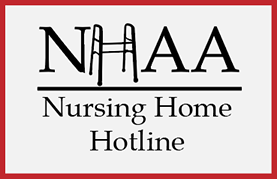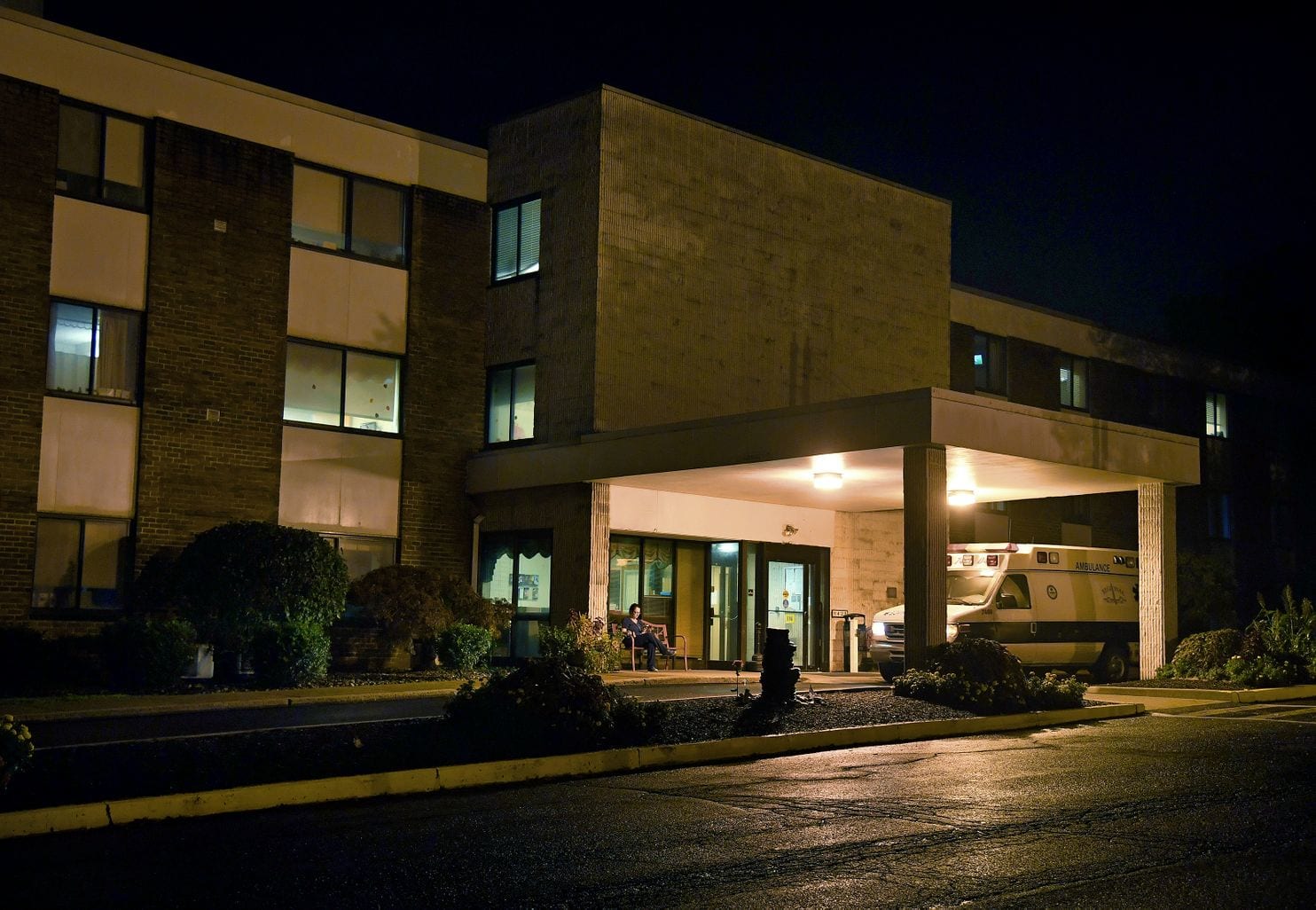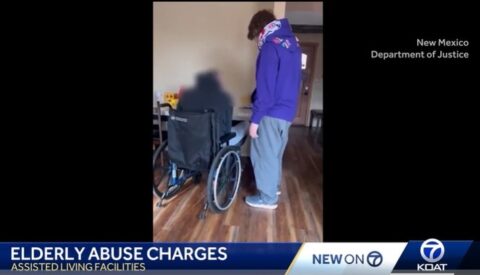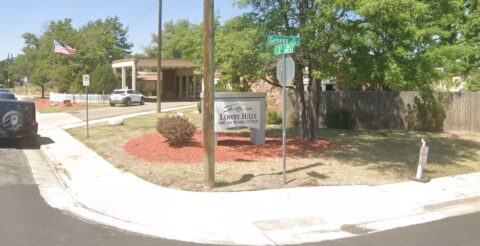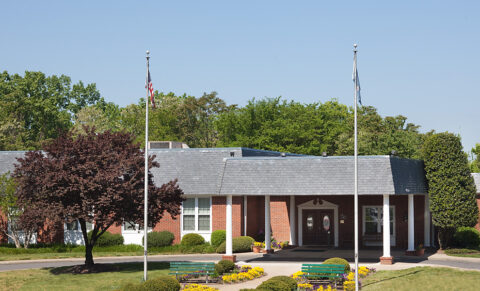POTTSVILLE, PA – Overdoses, bedsores, broken bones: What happened when a private-equity firm sought to care for society’s most vulnerable
In The News:
POTTSVILLE, Pa. — To the state inspectors visiting the HCR ManorCare nursing home here last year, the signs of neglect were conspicuous. A disabled man who had long, dirty fingernails told them he was tended to “once in a blue moon.” The bedside “call buttons” were so poorly staffed that some residents regularly soiled themselves while waiting for help to the bathroom. A woman dying of uterine cancer was left on a bedpan for so long that she bruised.
The lack of care had devastating consequences. One man had been dosed with so many opioids that he had to be rushed to a hospital, according to the inspection reports. During an undersupervised bus trip to church — one staff member was escorting six patients who could not walk without help — a resident flipped backward on a wheelchair ramp and suffered a brain hemorrhage.
When a nurse’s aide who should have had a helper was trying to lift a paraplegic woman, the woman fell and fractured her hip, her head landing on the floor beneath her roommate’s bed.
“It was horrible — my mom would call us every day crying when she was in there,” said Debbie Bojo, whose mother was treated at ManorCare’s Pottsville facility in September 2016. “It was dirty — like a run-down motel. Roaches and ants all over the place.”
Under the ownership of the Carlyle Group, one of the richest private-equity firms in the world, the ManorCare nursing-home chain struggled financially until it filed for bankruptcy in March. During the five years preceding the bankruptcy, the second-largest nursing-home chain in the United States exposed its roughly 25,000 patients to increasing health risks, according to inspection records analyzed by The Washington Post.
The number of health-code violations found at the chain each year rose 26 percent between 2013 and 2017, according to a Post review of 230 of the chain’s retirement homes. Over that period, the yearly number of health-code violations at company nursing homes rose from 1,584 to almost 2,000. The number of citations increased for, among other things, neither preventing nor treating bed sores; medication errors; not providing proper care for people who need special services such as injections, colostomies and prostheses; and not assisting patients with eating and personal hygiene.
Counting only the more serious violations, those categorized as “potential for more than minimal harm,” “immediate jeopardy” and “actual harm,” The Post found the number of HCR ManorCare violations rose 29 percent in the years before the bankruptcy filing.
The rise in health-code violations at the chain began after Carlyle and investors completed a 2011 financial deal that extracted $1.3 billion from the company for investors but also saddled the chain with what proved to be untenable financial obligations, according to interviews and financial documents. Under the terms of the deal, HCR ManorCare sold nearly all of the real estate in its nursing-home empire and then agreed to pay rent to the new owners.
Taking the money out of ManorCare constrained company finances. Shortly after the maneuver, the company announced hundreds of layoffs. In a little over a year, some nursing homes were not making enough to pay rent. Over the next several years, cost-cutting programs followed, according to financial statements obtained by The Post.
“You wonder how these people could have run a place that treated people so poorly,” said Bojo, who, like others interviewed, attributed the problems to lack of staff. “We would ask the director of the place, ‘Would you treat your mother this way?’ That stopped him for a minute, but we didn’t get an answer.”
“One time we came in to visit him and he was sitting there in a wheelchair naked, with just a blanket on him — no pants, no underpants,” said Michelle Maldonado, whose father, a former factory worker, was at the Pottsville home for several months in 2017. “He got bedsores, infections, and he had a couple of falls. It was like they would never check on him.”
“Carlyle was a very interesting group to deal with,” said Andrew Porch, a consultant on quality statistics to whom HCR ManorCare referred questions about health-code violations. “They’re all bankers and investment people. We had some very tough conversations where they did not know a thing about this business at all.”
In response to The Post’s reporting, Carlyle and HCR ManorCare representatives said care at the nursing homes was never compromised by financial considerations. The cost-cutting trimmed administrative expenses, not nursing costs, they said. The number of nursing hours provided per patient stayed fairly constant in the years leading up to the bankruptcy, according to the figures that the company reported to the government.
HCR ManorCare officials also disputed the idea that quality at the homes had suffered in recent years. They said their nursing homes offered excellent service based on the ratings issued by Medicare, the federal government’s insurance program for older Americans. ManorCare homes averaged 3.2 stars in the years before bankruptcy, which was slightly below the U.S. average. Some watchdog groups, such as the Center for Medicare Advocacy, are critical of the five-star rating system, however, because it relies on unaudited data reported by nursing homes.
As for the rise in health-code violations, HCR ManorCare officials noted the number of violations increased at other nursing homes as inspection methods changed. But the number of violations at HCR ManorCare homes rose about three times faster than at other U.S. nursing homes, according to The Post’s analysis. This rise is evident whether comparing total violations or the average number of violations per home.
At the suggestion of an HCR ManorCare expert, The Post looked at the five states where the chain has the most nursing homes. In four of those five states, violations at ManorCare homes rose steadily and outpaced increases at other nursing homes. For example, in Pennsylvania, the number of violations rose 12 percent faster than violations at others in the state; in Ohio, the number of violations rose more than two times faster. In Florida, the number of violations rose for two years and then fell for two years, leaving no clear trend.
Carlyle officials attributed the company’s financial trouble primarily to the U.S. government, and specifically the Medicare program, which in October 2011 reduced how much it paid for nursing-home services. In Carlyle’s view, the trouble was not primarily caused by the real estate deal, but the ensuing shortfall in Medicare revenue.
“In the first four years [after the acquisition] we felt very good about the progress” at HCR ManorCare, said Chris Ullman, a Carlyle spokesman. “They had improved some of the quality metrics. We were looking to expand, then things changed drastically due to the massive Medicare rate cut.”
But others in the industry said the company simply had too many financial obligations to weather unexpected challenges. Companies less burdened by financial obligations, they noted, did not wind up in bankruptcy court.
“Our first priority was to deliver quality care and serve the company’s patients well,” Ullman said. “We are disappointed this investment did not meet our financial expectations.”
After the bankruptcy, the nursing home chain was bought by Promedica Health, a nonprofit group.
“We look forward to being a not-for-profit mission-focused organization,” HCR ManorCare said in a statement, noting that “not a single creditor lost a single penny as a result of the bankruptcy filing.”
Pottsviile is the home one of HCR ManorCare’s facility. (Michael S. Williamson/The Washington Post)
In recent years, private-equity firms have moved into businesses serving some of the nation’s poorest or most vulnerable people.
The firms profit by pooling money from investors, borrowing even more, and then using that money to buy, revamp and sell off companies. Their methods are geared toward generating returns for investors within a matter of years, and this has led to criticism that they merely plunder company assets while neglecting employees and customers.
During and after the recession, as returns became scarce, private-equity investors began to explore industries they had once overlooked, and some invested in businesses that largely cater to the poor: payday lenders, nursing homes, bail bond providers, low-income homes for rental and prison phone services.
Ludovic Phalippou, a professor at Oxford who wrote the textbook “Private Equity Laid Bare,” says it is a question of whether private-equity methods are appropriate in all fields.
He has praised the ability of private equity to streamline companies but he has also described the firms’ approach as “capitalism on steroids.”
He said, for example, that while private-equity ownership of nursing homes is accepted in the United States, people in some other countries would be “aghast” at the idea.
“People will wonder whether this pure capitalism is appropriate in nursing homes,” Phalippou said. “The health and welfare of the old people who live there depend on them.”
One of the founders of Carlyle, David Rubenstein, explained to Freakonomics Radio last year the role of private equity: “You spend three to five years improving the company, incenting the managers to work harder, do more efficient things, and ultimately, after three or five years, you sell or otherwise liquefy the investment.”
He sees private-equity firms as a force for good.
“Private-equity people think that, while we’re not perhaps guardian angels, we are providing a social service, and that social service is making companies more efficient,” he said.
The origins of the HCR ManorCare deal go back to 2007, when Carlyle solicited investors for money for a new investment fund. More than 300 investors, mostly pension funds, investment companies and big corporations put up money. Carlyle raised $13.7 billion, with Carlyle agreeing to put up $700 million, or about 5 percent of the pool, according to the agreement between Carlyle and investors.
The fund, called Carlyle Partners V, then purchased an array of companies — a Canadian distributor of construction products, a Chinese shipping company and a U.S. aerospace company were among them. In December 2007, it bought HCR ManorCare for $6.1 billion plus fees and expenses. Most of the purchase price was borrowed money — about $4.8 billion — and Carlyle put up $1.3 billion.
The deal immediately faced protests from critics who said the aggressive financial tactics of private-equity firms are ill-suited for companies caring for some of society’s most vulnerable. In response, company officials promised patients’ care would not be compromised. They also hired a committee of three industry experts to monitor quality.
“Meeting the care needs of ManorCare’s patients and residents is our top priority,” Carlyle Managing Director Karen H. Bechtel said in a news release issued in October 2007. “ManorCare is poised to become an even stronger health care provider under Carlyle’s ownership.”
At first, the ManorCare deal seemed to work for Carlyle. Executives considered expansion plans.
But in 2011, the deal turned sour.
Analyzing private-equity deals is difficult because the rules that compel public companies to publish their financial statements generally do not apply to companies held by private-equity funds. In addition, even when public pension funds are investors in private-equity funds, private-equity firms such as Carlyle request that those pension funds exempt private-equity records from disclosure rules.
To put together a financial picture of HCR ManorCare, The Post obtained financial statements for the company for 2009 through 2016, as well as the agreement between Carlyle and its co-investors. Other data came from ManorCare’s bankruptcy filings and public-records requests to authorities in Florida, Wisconsin and California. Information about Carlyle’s other companies came from a database maintained by Phalippou and his colleagues.
From the start, Carlyle’s acquisition of HCR ManorCare made the company’s finances more risky because the purchase burdened it with billions in long-term debt.
But in April 2011, Carlyle made another critical move at HCR ManorCare, one that would enrich investors and imperil the financial footing of the chain.
Carlyle took HCR ManorCare’s vast real estate empire — the hundreds of nursing homes and assisted living facilities as well as the land underneath — and sold it to HCP, a real estate investment company. HCR ManorCare then had to pay rent to HCP for the use of the nursing homes.
This kind of deal, known as a sale-leaseback, is a common tactic of private-equity firms, and it generated financial benefits for Carlyle and its investors.
Carlyle got $6.1 billion from the sale, an amount that roughly matched the price that the private-equity firm had paid to buy the company just four years prior.
With that money, Carlyle paid off billions in debt that it racked up buying HCR ManorCare, according to company financial statements obtained by The Post. Crucially for Carlyle and its investors, the deal allowed them to recover the $1.3 billion in equity they put into the deal.
Carlyle made money from its investment in other ways, too. It took at least $80 million from the HCR ManorCare venture in the form of various fees, according to interviews and financial documents.
Most of that was a “transaction fee,” which is money Carlyle receives when it buys a company, typically 1 percent of the purchase. The $6.1 billion ManorCare purchase yielded Carlyle $61 million, Carlyle officials confirmed. That money was distributed to Carlyle and its investors.
In addition, Carlyle receives annual “advisory fees” from the companies that it purchases — essentially, Carlyle pays itself to manage the companies it owns. At ManorCare, those fees averaged about $3 million a year from 2007 to 2015, or about $27 million, according to documents and interviews. That money was also distributed to Carlyle and its investors.
Finally, there was one other person who made a lot of money despite the company’s financial woes. After the bankruptcy, longtime chief executive Paul Ormond was awarded $117 million under a deferred compensation agreement.
While the HCR ManorCare sale-leaseback benefited Carlyle and its investors, the chain could no longer pay its bills.
During the buyout by Carlyle, HCR ManorCare’s long-term financial obligations had risen from less than $1 billion to over $5 billion, according to financial statements. The real estate deal yielded enough money to help the company pay down some of that debt. But the deal also meant that HCR ManorCare had to make massive rent payments to its new landlord, and these, according to the company’s accounting, raised the company’s long-term financial obligations to $6 billion.
The rent HCR ManorCare was obliged to pay — to occupy the nursing homes it had once owned — amounted to $472 million annually, according to legal filings. The rent was set to escalate at 3.5 percent a year, and according to the lease, HCR ManorCare also had to pay for property taxes, insurance and upkeep at the homes.
Required to explain the bankruptcy in court filings, HCR ManorCare began its narrative with the sale-leaseback deal.
The rental price had been negotiated when the business environment for nursing homes was “favorable,” the company disclosed in the court filing. But then the environment became “significantly more challenging.”
The company cited a handful of reasons for the changing climate: increased competition from alternative health-care services; the decisions of many Americans to choose Medicare Advantage plans, which pay nursing homes less than traditional Medicare; and reductions in reimbursement rates from Medicare and Medicaid.
“This challenging business environment has resulted in decreasing revenue . . . and impeded [the company’s] ability to pay minimum rent” under the sale-leaseback agreement, the company said.
In interviews, Carlyle officials emphasized just one reason for the bankruptcy, however: Medicare’s decision in October 2011 to cut what it pays nursing homes by 11 percent. Roughly a third of the revenue for the chain comes from Medicare.
The Medicare cut “was a devastating blow for the industry,” Ullman, the Carlyle spokesman, said. “The whole industry went into a tailspin.”
Most of the industry, however, avoided bankruptcy court. Moreover, the Medicare cut in 2011 had merely erased an increase of about 16 percent from the previous year, according to government figures.
Over the next five years, earnings in the nursing-home industry remained above 10 percent of total revenue before interest and taxes, according to a report by CLA, a national public accounting firm.
Experts familiar with HCR ManorCare said it was massive financial obligations that led the company to bankruptcy. The company had been “over-levered” with debt.
“There were multiple reasons” for the bankruptcy, said Chad Vanacore, vice president and research analyst of health-care providers at Stifel, the investment bank. “I think it’s fair to say they were over-levered.”
HCR ManorCare “was doomed,” Tom DeRosa, chief executive of Welltower, a company that acquired HCR ManorCare’s real estate after the bankruptcy, said in an interview at a real estate conference last summer. “It was over-levered, and it couldn’t work under the capital structure that had been crafted.”
The financial obligations made it difficult for the chain to invest and adapt to market shifts, they said.
As a result of company finances, DeRosa said, HCR ManorCare’s management team had “one hand tied behind its back.”
After the sale-leaseback, the onset of financial troubles was sudden.
The chain never again recorded an annual profit, according to financial statements.
By the next year, the nursing homes could not afford their lease. An HCR ManorCare expert reported in a recent court filing that by 2012 the net cash flows at the nursing homes in some months were “insufficient . . . to make the required rent payments.”
Executives began to cut costs.
By 2012, HCR ManorCare had instituted a “cost reduction program” according to a financial statement of HCP, its new landlord.
Between 2010 and 2014, the amount that HCR ManorCare spent to keep the company’s facilities going — operations — fell by 6 percent, after accounting for inflation, according to company financial statements that include its nursing homes, assisted living facilities and other businesses. Operating expenses continued to fall after that, too, but that was partly because the company was reducing the number of nursing homes it operated.
Then, during “significant” losses from 2014 through 2016, HCR ManorCare management “instituted measures to control expenses and conserve cash,” according to an HCR ManorCare financial statement.
During this period, the number of health-code violations reported at HCR ManorCare properties each year began to rise.
Inspectors reported bedsores, falls and infections — the kinds of trouble that some experts say signals a lack of nurses who are qualified enough.
Bedsores occur at nursing homes because there are not enough people to move residents who are confined to their beds, according to experts; the falls happen because there is a lack of staff to answer bells to help people get to the bathroom; and infections spread when aides forget to wash hands.
“Almost all of these issues relate to staffing — either not enough people or not enough training,” said Charlene Harrington, a nurse and professor at the University of California at San Francisco, who has studied nursing homes for years. “That’s why this is so frustrating. It’s just basic hands-on care.”
One of the biggest operating expenses for any nursing home is personnel. According to the figures that HCR ManorCare reported to the government, the nursing homes had been operated for years with fewer nurses compared to other homes.
In terms of nurse staffing hours per patient, HCR ManorCare scored 10 percent or more below the national average. The staffing scores, which include registered nurses, licensed practical nurses and nurse aides, are adjusted by Medicare to reflect the varying needs of patients at each home. At HCR ManorCare, the staffing score changed little during the years leading up to the bankruptcy.
Vincent Mor, a Brown University health policy professor who has studied nursing homes and whom HCR ManorCare hired as part of an expert committee on quality, said, in periodic visits to nursing homes, he saw no signs that cost-cutting affected staffing.
“We never heard that any cost-cutting prevented an administrator from hiring a new person,” he said.
Mor said the statistics he reviewed for the most serious health-code violations — those that are characterized as signs of “substandard” care — showed no clear trend in the years leading up to the bankruptcy. In 2017, according to The Post’s tally, these violations were found at 8 percent of HCR ManorCare homes, and 14 percent of homes elsewhere, an advantage that company advocates stressed.
Mor did not review the data for overall violations, however, and these showed a steady rise.
Told of The Post’s finding of increased violations, Mor said, “It certainly shows that there may have been something going on there.”
HCR ManorCare officials also suggested The Post discuss the violations data with Andrew Porch, the CEO of a consulting group that works for ManorCare analyzing quality statistics. He used a slightly different Medicare data set, but his figures show a similar trend. Over the period from 2013 to 2017, violations at HCR ManorCare properties rose 26 percent, while the national figure rose 10 percent, according to Porch’s figures.
Porch also presented figures comparing HCR ManorCare to other nursing homes that are operated for profit. The average number of violations at HCR ManorCare and other for-profit homes rose about the same amount over the 2013 to 2017 period, according to his figures. However, HCR ManorCare nursing homes averaged more violations throughout the period. For example, the company’s homes had 9.7 violations per home in 2017, while other for-profit nursing homes had 8 percent fewer, or 8.9, violations per home.
In a statement, HCR ManorCare said The Post was misusing the Medicare data, but did not specify how.
“The Post’s internally created system is not a valid approach to evaluate and compare nursing home quality,” it said. “It is inconceivable to us that you are not using the [Medicare] data as it is designed to be used.”
The Post used a public database issued by Medicare to count health-code violations at 230 HCR ManorCare homes that remained in the chain during the years the Carlyle fund owned the company. Most nursing homes are inspected every year. The review was limited to the period from 2013 to 2017 because the Medicare data before that period was recorded inconsistently. Such counts, in addition to other tactics, are used by Medicare and academics to evaluate nursing-home quality. The Post did not create a system to evaluate nursing homes.
Several nurses who worked at the ManorCare facility and at others nearby said they thought there was often too few people working. Some said they noticed the problems got worse about 2012.
“They always worked short-staffed,” said Diane Bridges, a nursing assistant who worked there in 2015. “There were two CNAs [certified nursing assistants] for over 30 people. The workload was very heavy. There were not enough girls to get the residents up, get them out of bed in the morning.”
“It was a very good place to work — and then it wasn’t,” said a nurse’s aide who left in 2013 after more than a decade there. “They just didn’t seem to have the money. The Hoyer lifts [equipment for moving patients] started breaking down and it was hard to get them fixed. They switched to cheaper supplies. Residents started complaining.”
“I felt bad because we were supposed to get to these room bells in a certain amount of time, but we couldn’t — there weren’t enough people,” said Kiesha Miller, a nursing assistant who worked at the ManorCare in Allentown, Pa., from 2009 to 2012. “All I could do was say, ‘I’m sorry we’re doing the best we can,’ because management would tell us not to say we’re short-staffed. And when we complained, management would say we can’t afford to have that many people on staff. And I thought, ‘This is just wrong.’ ”
At Pottsville, the number of lawsuits against ManorCare rose.
In the three years before Carlyle purchased ManorCare, the Pottsville facility had been sued just once, according to Schuylkill County court records.
In the three years before it filed for bankruptcy, 10 families sued or filed preliminary papers indicating they may file suit.
All of the plaintiffs in these cases, however, either declined to be interviewed or could not be reached. ManorCare and plaintiffs typically settle such cases before trial, and ManorCare often requires plaintiffs to sign agreements forbidding publicity.
Asked about the rise in legal complaints at Pottsville, the nursing-home company said Pennsylvania has been “increasingly targeted by out of state trial attorneys.” The lawsuits, however, describe an array of neglect similar to those of the state inspection reports. One woman had suffered three falls, multiple infections, dehydration and bedsores, according to the lawsuit that her family filed; another also had multiple falls, one that caused a broken hip; a liver cancer patient had fallen six times during four months, and at least one of those times it was while reaching for his urine bag; and another broke his hip when aides were moving him to be weighed, but had to wait two hours before he was taken to a hospital.
“The short-staffing was to the extent that it was very dangerous for the residents,” said Lisa Kay Wasnowic, who worked off and on at the Allentown ManorCare from 2004 to 2014. “At times, it was just one aide for 60 patients. And it just kept on getting worse.”
Personal Note from NHA–Advocates: NHAA shares with all the families of loved ones who are confined to nursing homes the pain and anguish of putting them in the care of someone else. We expect our loved ones to be treated with dignity and honor in the homes we place them. We cannot emphasize enough to family members of nursing home residents; frequent visits are essential to our loved ones’ well-being and safety. This nursing home and many others across the country are cited for abuse and neglect.
You can make a difference. If you have a loved one living in this nursing home or any other nursing home where you suspect any form of abuse or neglect, contact us immediately.
We have helped many already and we can help you and your loved one as well by filing a state complaint, hiring a specialized nursing home attorney or helping you find a more suitable location for your loved one.
Contact us through our CONTACT FORM located on our website here below or on the sidebar or call our toll free hot line number: 1-800-645-5262.
You can make a difference even if your loved one has already passed away
Your Experience Matters
...and we want to hear it.
NHAA is here to assist families, residents, and the community by sounding the alarm on issues like those found above. This nursing home and many others across the country are cited for abuse and neglect.
If you have or had a loved one living in this nursing home or any other nursing home where you suspect any form of abuse or neglect, contact us immediately.
We have helped many already and we can help you and your loved one as well by filing a state complaint, hiring a specialized nursing home attorney or helping you find a more suitable location for your loved one.
You can make a difference, even if your loved one has already passed away.
Please give us a call at 1-800-645-5262 or fill out our form detailing your experience.
Personal Note from NHA-Advocates
NHAA shares with all the families of loved ones who are confined to nursing homes the pain and anguish of putting them in the care of someone else. We expect our loved ones to be treated with dignity and honor in the homes we place them. We cannot emphasize enough to family members of nursing home residents; frequent visits are essential to our loved ones’ well-being and safety.
If you are struggling and upset, click here to understand your options, or contact us through our contact form or call our toll free hot line number: 1-800-645-5262.
